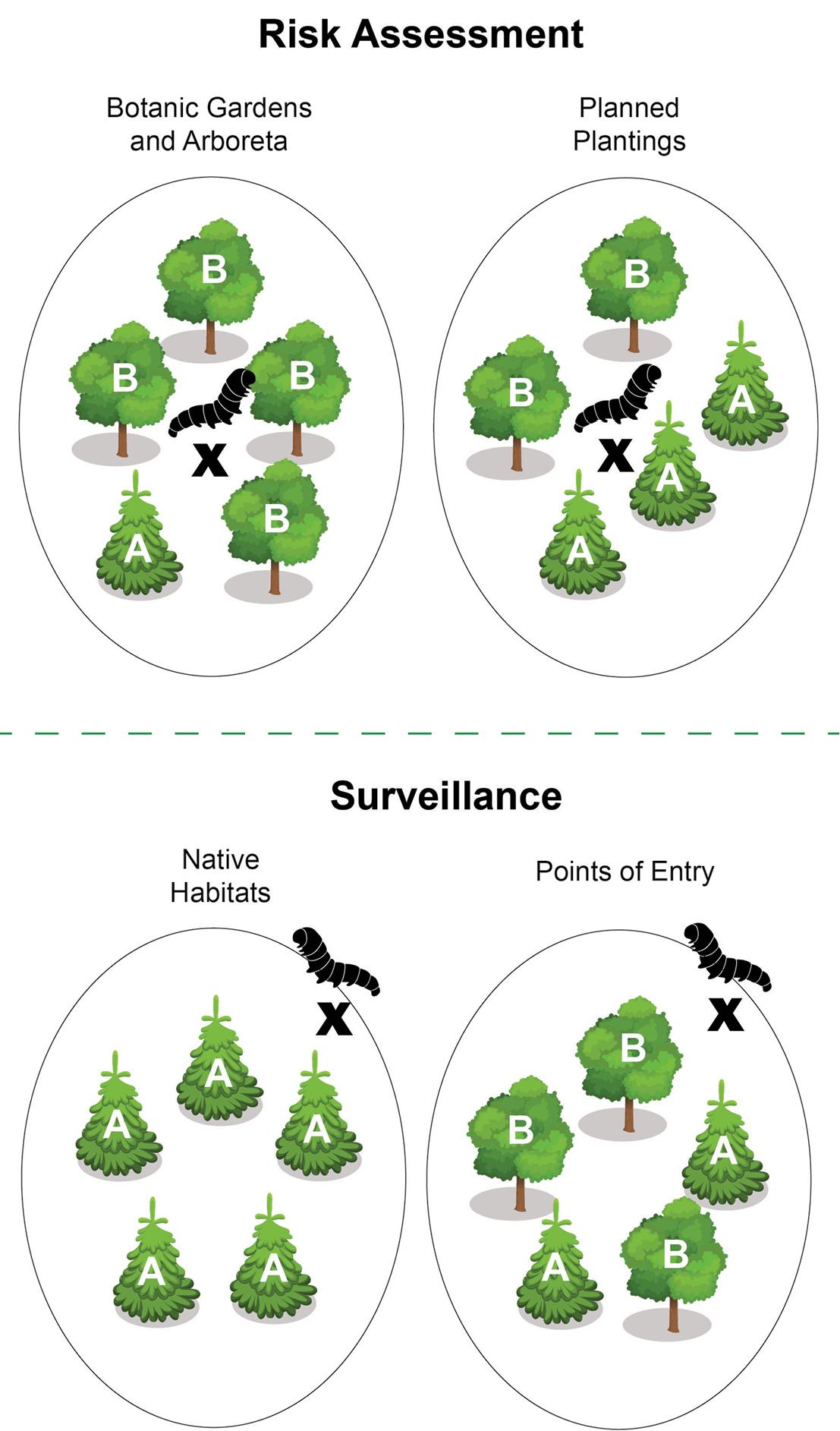
|
||
|
Different types of sentinel plants. Risk Assessment: monitoring expatriate plant A (outside its native range), can give information on exotic pests (pest X) associated with plant B that might attack Plant A should pest X become established in the home range of plant A. In this case, plant A acts as a sentinel plant for risk assessment. Sentinel plants may be in situ within existing botanic gardens and arboreta or planned plantings to record colonization and impacts. Risk assessment sites can be in the native range of plant B or regions outside plant B’s native range where pest X is invasive. Surveillance: monitoring plant A and/or plant B in the native range of plant A may give information on the arrival and spread of pest X into that area. In this case, plants A and B act as sentinel plants for surveillance. Surveillance sites may be in native habitats for plant A or at likely points of entry for pest X. |